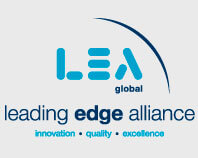As 2022 begins, many industries are still facing significant financial and operational hurdles as the COVID-19 pandemic continues. Fortunately, various credits and tax strategies may provide tax-saving opportunities to help your business during challenging times. Three key money-saving opportunities and what qualifies for these programs are described below.
-
Research and Development (“R&D”) Tax Credit
The Federal R&D Tax Credit, enacted in 1981 to incentivize innovation, offers a dollar-for-dollar offset of Federal income taxes that equates to about 4-10% of the amount of qualified expenses a company has each year. Start-ups that meet certain criteria may also use the credit to offset Federal payroll tax obligations. This is an excellent benefit for companies that may not yet owe income taxes. Moreover, various states have beneficial R&D credits – notably Georgia’s R&D credit permits companies to use the credit to offset state payroll withholding obligations.
Qualifications
Your company does not have to be on the cutting-edge of a scientific discovery to qualify for the R&D credit. Instead, the credit is granted to companies for enhancing the quality, reliability, performance and/or functionality of their product. This is common in the software development, manufacturing, engineering, food and beverage, aerospace and pharmaceutical industries. If you are engaged in development or improvement of a product, software application, manufacturing process or technology, you may qualify for the R&D tax credit and significant cost-savings.
-
Cost Segregation
Cost segregation studies are a valuable tax strategy for real estate investors and commercial property owners. Various components of real estate (leased or owned) may be segregated and reclassified for depreciation purposes. Certain costs previously subject to a 39-year depreciable life can instead be reclassified with a five, seven or 15-year depreciable life, resulting in substantial tax savings.
Qualifications
If your business is planning to buy, build or substantially improve real property, a cost segregation study can help you accelerate depreciation deductions, reduce your taxes and boost your cash flow. Even if you invested in real property in previous years, you may still have an opportunity to perform a lookback study and catch up on the deductions you missed.
-
Employee Retention Credit (“ERC”)
As part of the CARES Act, the ERC provides significant payroll tax liability relief for employers who retained payroll throughout the pandemic. The credit may be claimed per quarter after March 12, 2020 and before October 1, 2022, for a maximum credit of $27,000 per employee. The credit may be claimed retroactively with Form 941-X within 3 years.
Businesses started after February 15, 2020 may also qualify for the credit as a Recovery Startup Business allowing you to claim a credit for third and fourth quarters of 2021.
Qualifications
If your company was subject to a full or partial government-mandated suspension due to COVID OR experienced a significant reduction in quarterly gross receipts (more than 50% in 2020, more than 20% in 2021) as compared to the same quarters in 2019, you may qualify for the ERC. While any industry may qualify for the ERC, service industries were especially impacted.
If you started your company after February 15, 2020, maintain average annual gross receipts that do not exceed $1 million and employ one or more employees (other than 50% owners) you may qualify as a Recovery Startup Business.
Contact Us
Bennett Thrasher has a dedicated team of advisors to assist you in both claiming and documenting these opportunities. If you have any questions, please contact Betsi Barrett to learn more about our credits and incentives services by calling 770.396.2200.




